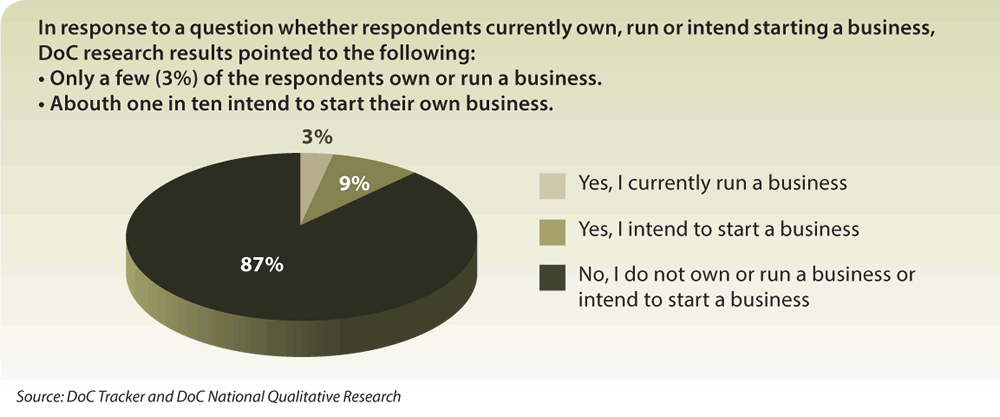* UNEMPLOYMENT IN INDIA *
Unemployment Rate In India Rose To 9.3% In January-March 2021; Women Affected More. In the first three months of 2021, the unemployment rate in India among those above the age of 15 was around 10 per cent, data from the periodic labour force survey by the National Statistical Office (NSO) showed.
TYPES OF UNEMPLOYMENT
1. Open Unemployment Open unemployment is a situation where in a large section of the labour force does not get a job that may yield them regular income. This type of unemployment can be seen and counted in terms of the number of unemployed persons. The labour force expands at a faster rate than the growth rate of economy. Therefore all people do not get jobs. 2. Disguised Unemployment It is a situation in which more people are doing work than actually required. Even if some are withdrawn, production does not suffer. In other words it refers to a situation of employment with surplus manpower in which some workers have zero marginal productivity. So their removal will not affect the volume of total production. Overcrowding in agriculture due to rapid growth of population and lack of alternative job opportunities may be cited as the main reasons for disguised unemployment in India. 3. Seasonal Unemployment It is unemployment that occurs during certain seasons of the year. In some industries and occupations like agriculture, holiday resorts, ice factories etc., production activities take place only in some seasons. So they offer employment for only a certain period of time in a year. People engaged in such type of activities may remain unemployed during the off-season. 4. Cyclical Unemployment It is caused by trade cycles at regular intervals. Generally capitalist economies are subject to trade cycles. The down swing in business activities results in unemployment. Cyclical unemployment is normally a shot-run phenomenon. 5. Educated Unemployment Among the educated people, apart from open unemployment, many are underemployed because their qualification does not match the job. Faulty education system, mass output, preference for white collar jobs, lack of employable skills and dwindling formal salaried jobs are mainly responsible for unemployment among educated youths in India. Educated unemployment may be either open or underemployment. 6. Technological Unemployment It is the result of certain changes in the techniques of production which may not warrant much labour. Modern technology being capital intensive requires fewer labourers and contributes to this kind of unemployment. 7. Structural Unemployment This type of unemployment arises due to drastic changes in the economic structure of a country. These changes may affect either the supply of a factor or demand for a factor of production. Structural employment is a natural outcome of economic development and technological advancement and innovation that are taking place rapidly all over the world in every sphere. 8. Underemployment It is a situation in which people employed contribute less than their capacity to production. In this type of unemployment people are not gainfully employed. They may be employed either on part-time basis, or undertake a job for which lesser qualification is required. For example a Post Graduate may work as a clerk for which only S.S.L.C. is enough. 9. Casual Unemployment When a person is employed on a day-to-day basis, casual unemployment may occur due to short-term contracts, shortage of raw materials, fall in demand, change of ownership etc. 10. Chronic Unemployment If unemployment continues to be a long term feature of a country, it is called chronic unemployment. Rapid growth of population and inadequate level of economic development on account of vicious circle of poverty are the main causes for chronic unemployment. 11. Frictional Unemployment Frictional unemployment is caused due to improper adjustment between supply of labour and demand for labour. This type of unemployment is due to immobility of labour, lack of correct and timely information, seasonal nature of work etc.
WHY THE PEOPLE UNEMPLOYEED IN INDIA
The unemployment rate in India, amidst lockdown and restrictions on mobility, is 12.81% as of June 8th 2021 based on the data provided by the CMIE. Earlier, the unemployment rate in India shot up from 6.5 per cent in March 2021 to 8 per cent in April 2021, to 14.7% by May end, while the employment rate fell from 37.6 per cent in March to 36.8 per cent in April, says the report of CMIE – Centre For Monitoring Indian Economy.
In 2020, the unemployment rate in India fell to 7% in September 2020 from the record high of 29% since the country went into lockdown from March 2020, However, it later increased to 9.1% in December 2020.
The unemployment rate again declined to 6.5 per cent in January 2021 from 9.1 per cent in December 2020, while the employment rate surged to 37.9 per cent as compared to 36.9 per cent.
The lockdown to contain the coronavirus outbreak has forced many industries to shut down thus increasing unemployment across the country.
The unemployment in India stood at 6.1% in the financial year 2018 mentions the NSSO – National Sample Survey Organisation Report 2019. Candidates can check the detailed information on NSSO on the given link.
Possible root causes of unemployment
Some research shows that the deliberate exclusion of black people from the educational system and from skilled occupations under apartheid contributed to high rates of unemployment today.
Inadequate education and lack of productivity is costing jobs. Unemployment increases progressively with decreased educational levels; and the education system is not producing the skills for the labour market.
Labour supply is affected by the increase in the number of job seekers over the years. The rate of entry of women - especially African women - into the labour market has risen sharply. Furthermore, the South African population is a young population – more people enter the working age as compared to the number of jobs that become available in the labour market.
During the recession, many workers lost their jobs, the largest number in manufacturing. This meant that companies could no longer afford to employ more people and had to reduce the workforce, therefore contributing to the unemployment rate in the country.
Higher wage demands may lead to decline in new employment. Some argue that labour demands make South Africa’s labour regime inflexible while others point to it as important to improve the quality of life through a living wage.
Irrespective of various government initiatives to enhance entrepreneurship, entrepreneurial activity in South Africa is low. For example, the number of young people involved in entrepreneurial activity remains extremely low at 6 per cent of the total youth (18-34 years) population (DoC Tracker, 2014). This low level of interest is borne out by DoC research results as illustrated in Figure 1.
Figure 1: Owning, running or intending to start a business

The South African economy has been growing slowly with a relatively small employment growth over the years (Department of Labour, 2013). Economic growth has been too slow to create job opportunities (the dti, 2012).
Employment trends
Unemployment is a major issue for South Africa’s youth. However, this is also a global phenomenon given the sluggish world economy. International youth unemployment in certain Eurozone countries is also extremely high (Greece and Spain in particular).
At 36.1 per cent South Africa’s unemployment rate amongst the youth (15 to 34 years) is significantly higher compared to that of those aged 35-64 years. Unemployment is especially high (53.2 per cent) amongst those aged 15-24 years.
The slide below shows unemployment trends for youth aged 15-34 in comparison with adults aged 35-64.
Figure 2: Unemployment Trends

Source: StatsSA Quarterly Labour Force Survey, 2008-2014Q1
Working towards beating unemployment
The current situation in South Africa is far from being desirable and government working with social partners is hard at work to find sustainable solutions. The National Development Plan (NDP) calls for all South Africans to work together to realise the goal of reducing the unemployment rate to 14 per cent by 2020 and 6 per cent by 2030. Reducing unemployment is also one of the key priorities of government.
Reaching the goals of the NDP will require a change of mind-set from all role players, be it government, business or labour. We must find ways to tackle this issue decisively. This sentiment is confirmed by public perceptions of unemployment which are explored below.
Public perception on unemployment
Extensive scientific public opinion research indicates that, for quite some time now, South Africans perceive unemployment as the most important challenge facing the country.
Figure 3: Challenges the Public Want Government to Address
Most important challenges the public want government to address

Source: DoC Tracker
Information on how to find a job and how to get job training/skills development are the topics which are top of mind for most South Africans.
Figure 4: Public Sentiment on the Causes of Unemployment
Drivers of perception

Source: DoC National Qualitative Research
Research clearly points to the fact that the labour supply outstrips demand, which means that there will never be enough jobs created in the formal economy to absorb the unemployed.
It is also clear that more people should be encouraged to start their own businesses, to be entrepreneurs and ultimately self-employed.
However, what is also evident is that there are perceptions about the causes of unemployment, and in particular perceived stumbling blocks that have to be dispelled if we want to entrench a spirit of entrepreneurship in the country.
This is where communication has a big role and a big responsibility.
Communication is key
- Firstly a campaign at addressing the negative perceptions is needed which would encourage entrepreneurial spirit amongst South Africans and address feelings of hopelessness and perceptions regarding nepotism etc.
- Secondly there is an information/education gap where communication has a big role to play. The need for information on how to grow a business is extensive – e.g. where and how to find finance; how to market your business; how to attract new customers; how to run a business, the kind of skills needed; training opportunities; opportunities to gain experience.
- Lastly when job seekers make the decision to be self-employed, government should provide an effective and friendly service that helps them persevere.SHIKSHASYSTEM.BLOGSPOT.COM















0 Comments